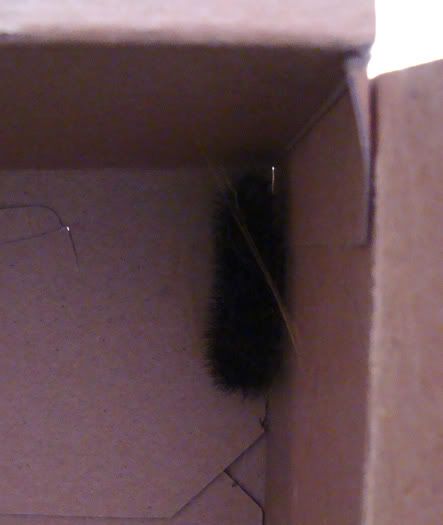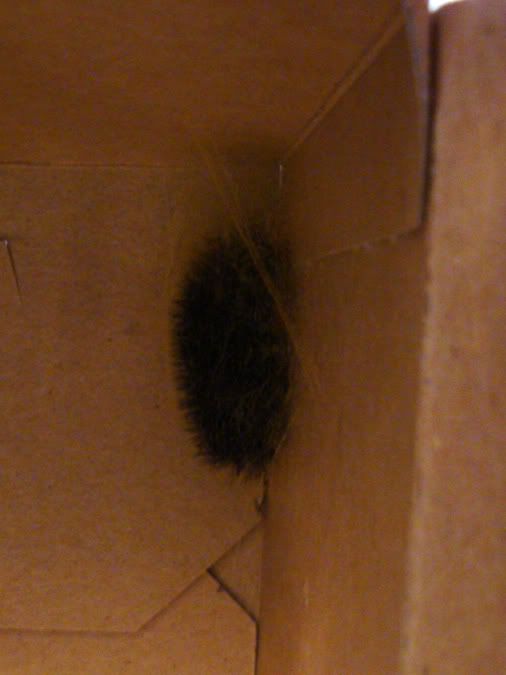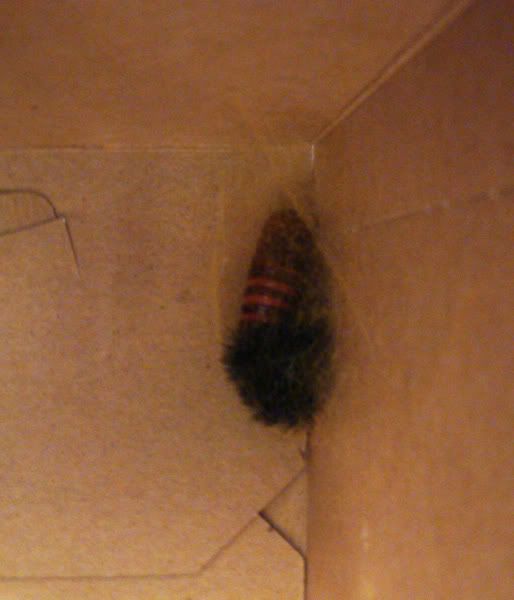he was brought home in a jar, and then placed inside a 10 gallon fish tank, along with some leaves of dandelions, honeysuckle and violets. i had identified him previously because of his distinctive orange bands which became visible when he curled up in defense mode. so, having identified the caterpillar as that of a giant leopard moth, i found which kinds of food were most popular with that caterpillar and tried them all. the violet leaves seem to have been his preferred choice. i refreshed the supply of these multiple times a day.

after observing the caterpillar over a few days, i noticed that he was nocturnal, and would remain nearly motionless during daylight hours. eventually, however, he began to run around and around the tank day and night; this was unusual, and i thought that perhaps he was looking for a place to settle in for his transformation, but couldn't find a happy spot. he tried spinning silk in two different corners of the tank, but gave up eventually on each spot. i decided that there was something he needed that wasn't in the tank, that perhaps the glass was too slick for him and the silk to cling to easily. so i introduced a small cardboard box with a twig in it, the bottom of the box placed against the back of the tank so i could still observe the caterpillar. within one minute of me putting the box in the tank, the caterpillar was in it and only left once to come right back. he stayed in it, checking it out for about a day, then began weaving silk in the upper right corner of the box.

the next day, he had surrounded himself in that corner with a fine netting of silk, and remained motionless there now both during day and night.

another couple of days later, and it appears that the cardboard box was just what he needed. he's now shedding his skin as he begins to pupate. unlike many moths, the giant leopard moth caterpillar does not make a solid cocoon, but rather pupates directly within the fine netting he's woven.

more information will be posted as the transformation progresses.
the moth-to-be:


4 comments:
Hey! I found a leopard caterpillar outside my door one night. I was excited about it and showed my 11 year old son. I searched online and it didn’t take long to identify it and what it eats, but making its habitat homey for him was difficult. My little guy also started to spin a web but then stopped and his habitat is a large plastic container which is also too slippery. I’m so glad I found your site, because now I’ve given him a cardboard box to settle in and I can’t wait to see him begin to hibernate. Thanks so much for your blog and photos!
Cris
I found one of these today on a country road...as I was running back for what I thought was a wooly bear. This is NOT a wooly bear! So I checked it all out, cool red bands, on the body, not on the spines, and much fatter and longer than the wooly bears I was looking for. It was a sunny, cool day in Michigan, I do not remember seeing one of these before. It took some searching but I found the exact caterpillar, glad for all the info on the internet. I can make a box for him, but would hate for him to emerge and then just freeze or starve, maybe I will have to let him go. Any suggestions?
I have one outside my door in an old clay flower pot. It's getting really cold out and don't want it to freeze. I could really use some advice. Will he be okay through the winter?
giant leopard moth caterpillars hibernate through the winter and come out to feed again in the spring before they finally become a pupa and hatch. so if you find one in the winter time, it should be left outside to hibernate.
Post a Comment